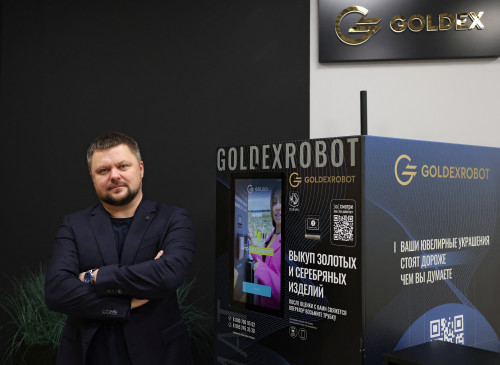By Elena Fabrichnaya and Gleb Bryanski
MOSCOW (Reuters) -Financial tech firms are using AI to try to persuade Russians to cash in their gold at automated machines, although despite this year’s more than 60% price rally they are facing scepticism.
Russia, which holds more than a third of its reserves in gold, authorised automated sales of the precious metal last year. But while the companies rolling out the ATMs say interest in selling has risen, Russians have not rushed to part with their gold in the same way as people have elsewhere.
Russians are not only hoping for further price rises, some say they see few alternatives to gold in terms of investment safety as sanctions have made it hard for them to invest in Western currencies or other assets.
Some Russian families hold gold coins minted by the country’s last Tsar, Nicholas II, which have been passed down through generations – surviving the 1917 revolution, Communist purges, World War Two and the collapse of the Soviet Union.
But this deep attachment to gold, with Russians estimated to hoard a total of 1,000 metric tons of bullion, is not deterring the entrepreneurs who say they are making it easier to cash in.
“Many people, while gold prices are high, are ready to exchange their reserves for real money,” said Evgeny Gorodilov, co-founder of Goldexrobot, a startup aiming to install 600 gold ATMs in shopping centres across Russia.
Gorodilov said that sales through traditional channels, such as pawnshops or, more recently, electronic trading platforms, have deterred many people due to opaque valuation processes, suspicions of unfair pricing and fraud risks.
Goldexrobot’s ATMs use AI to carry out spectral, hydrostatic and metal density analyses to verify the authenticity of the gold and then offer a price using the latest quotes for the metal from the Moscow Stock Exchange.
To start a transaction, the customer must complete an identification process. A gold item is inserted into a slot for valuation. The proposed price appears on a display, and if accepted, the payment is sent to the customer’s bank card.
Russia’s central bank tested the technology through its regulatory sandbox before it was allowed to enter the market.
While Gorodilov said that its customers had grown by about 10% this year, he has not seen explosive growth in private gold sales since most Russians expect prices to rise further.
SAFETY CUSHION IN CASE OF HYPERINFLATION
Russia removed the value-added tax (VAT) on gold sales for investment purposes in 2022 as Western sanctions took effect, which resulted in sales soaring fivefold in 2023.
And sales have continued to rise, with Russia’s Finance Ministry advising investors to keep long-term savings in gold.
“I bought gold not with the aim of making a profit in the near future, but with the aim of creating a safety cushion for myself in case of hyperinflation,” said Dmitry Semenov, a private gold investor.
MGKL Group, which owns a network of pawnshops across Russia, said demand for gold jewellery, which it either resells or holds as collateral, doubled in the first nine months of 2025.
The metal’s wider appeal is also in evidence at the St. Petersburg Stock Exchange, which launched trading in physical gold on October 20, saying that the world’s second-largest gold producer needs its own price benchmark.
And for some investors the ATMs are not the way forward.
“Gold ATM? No, why sell something at a discount when getting full price is possible. In 2026, I am confident there will be further growth in the value of gold. This is related to global instability and increasing rates of inflation,” said Semenov.
(Additional reporting by Olga Popova; Writing by Gleb Bryanski; Editing by Alexander Smith)



